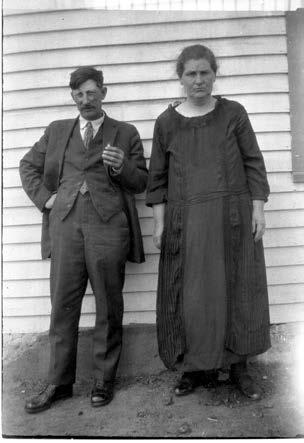[sense of place]
In 1893, Laura Eisenhuth was elected as North Dakota’s Superintendent of Public Instruction. There be may very little of note about this particular seat in this particular year except for one thing—Ms. Eisenhuth became the first female elected to a statewide office in the United States. Almost twenty years before women even earned a constitutional right to vote, Ms. Eisenhuth broke the barrier of statewide elected office for American women. In 1933, another North Dakota legislator, Minnie Craig, was elected as the first female Speaker of the House in the country. Gains came in other elective offices as well. By the late 1970s, North Dakota ranked 11 out of 50 states in terms of the proportion of the state legislature that was female. Granted, the number of women in the legislature was a mere 13 percent, but compared to other states, North Dakota was notable. Within the legislature, women were reaching new leadership heights. During her tenure in the early 1980s, Representative Tish Kelly was the only female Speaker of the House in the country. North Dakota appeared poised to be a leader in women’s representation.
Nothing Will CHANGE If Nothing Changes By Kjersten Nelson
Unfortunately, those gains slowed significantly. By the early 1980s, the state’s rank dropped to twenty-ninth; by 2003, we were ranked forty-fourth, where we have largely remained. As of 2011, North Dakota ranks forty-fifth in the nation for women in the state legislature. Perhaps more striking is that the actual percentage—14.9 percent—is not much higher than the percentage in 1977 (12.4 percent). While the numbers fluctuated within this time period, women have lost ground in the state legislature. It is helpful to place North Dakota’s underrepresentation problem in a larger context. The United States, as a whole, has seen sudden gains in terms of women’s representation, often followed by stagnation or losses. Typically considered a response to the Anita Hill–Clarence Thomas hearings, women flooded congressional races in 1992. The number of women in the United States Congress jumped from 32 in the 102nd Congress to 54 the following year. There was no corresponding jump in North Dakota during this time; in fact, this is precisely the point where the state’s ranking started to drop. The same cannot be said for our neighboring states. Minnesota currently ranks fifth in the nation for the proportion of women in its state legislature (31 percent). Montana is twenty-third in the nation (24 percent), and South Dakota is twenty-seventh (20 percent). To be sure, this representation problem exists elsewhere. Women make up a little over 50 percent of the population but only occupy 41 percent of the seats in Colorado’s state legislature (which ranks first). As a country, we rank seventy-first in the world, far behind other countries like Rwanda (first) and Canada (thirty-ninth). Nevertheless, in a context of underrepresentation of women, 22
North Dakota falls within the bottom 10 percent. Talking about this underrepresentation as a problem, in and of itself, contradicts many of our current beliefs about the way things should be. Many of us have internalized egalitarian beliefs about gender. The logical extension of these egalitarian beliefs is that gender should not matter. In other words, male or female, leadership is about the individual, not the social groups with which that person identifies. In a perfect world, this might be true. However, the reality is that gender socializes us in important ways. Psychologists have found that








